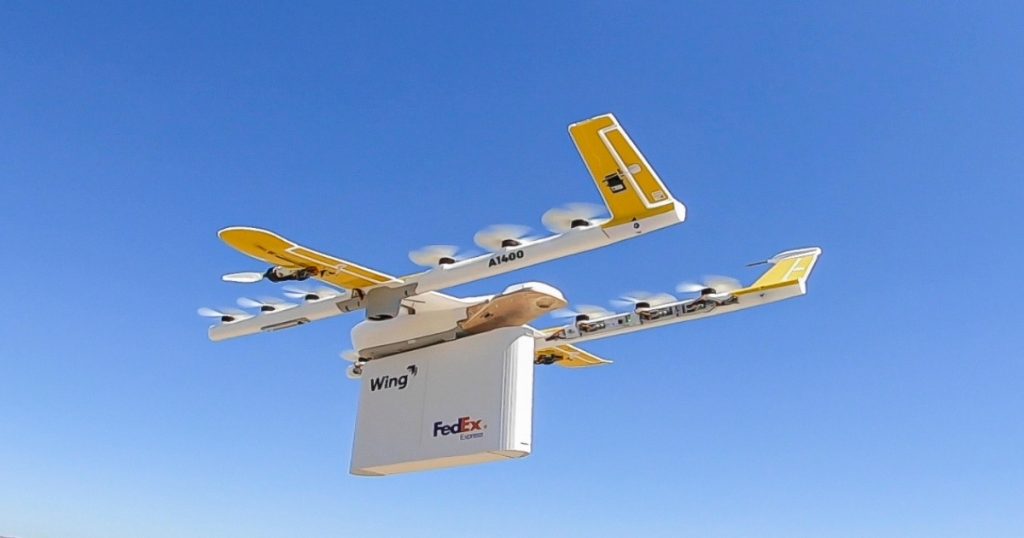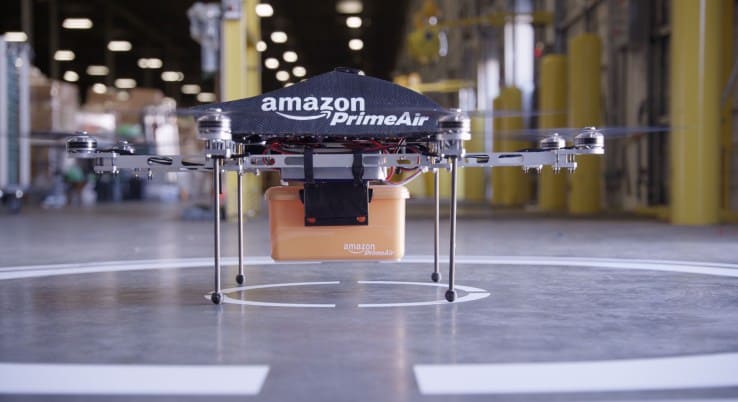Part 135 Drone Delivery: One Year Later
BY Alan Perlman
13 March 2020After years of hype, breathless discussion, and private testing, the FAA finally approved the first drone company for a Part 135 air carrier certificate for drone delivery. That honor went to the Alphabet-owned Wing Aviation and was officially awarded in April of 2019, followed just a few months later by the first Standard Part 135 certificate for UPS Flight Forward in September, 2019.
With 6 more companies currently applying for Part 135, it appears the future of drone delivery is quickly approaching. So, seems as good a time as any to pop in on the top drone delivery companies, find out what they’re up to, and see what their efforts say about what we can expect from drone delivery in the next few years.
Wing Aviation
Launched in 2012, Wing is the “W” in Alphabet’s catalog of letter-themed companies. The initial mission for the project was to find ways to deliver life-saving technologies to those in need (like defibrillators to heart attack patients). But once they realized that transporting medical products added additional layers of complexity, Wing pivoted to honing the UAS technology required to deliver other time-sensitive products like cupcakes, burritos, and candy bars.

Photo credit: Wing
Flash forward to 2019, with their shiny new Part 135 Single pilot air carrier certificate in hand, and a year in the IPP under their belt, and Wing has officially launched in a few select cities around the globe. Most of the 80,000 test flights have been in drone-friendly Australia, but the first US test site for commercial operations of drone delivery is the Christiansburg, VA community, which is currently live and ready to start delivering. With the free Wing App, Christiansburg residents can receive their FedEx packages, Walgreens purchases, and select goods from local businesses delivered right to their door (or side yard) within minutes.
As the nation’s first commercially available drone delivery service, Wing is testing a decentralized delivery model, similar to the just-in-time, tech-enabled models of Grubhub and UberEats. Right now, Wing partners with online retailers, puts a portion of their products on the Wing app, and then delivers those products directly from the Wing “Nest” located a few miles away from the service area. The scalability of this model remains to be seen, but with Alphabet’s deep pockets, database, and first mover advantage, Wing is leading the charge into the drone delivered future.
UPS
UPS Flight Forward boasts the first Standard Part 135 air carrier certificate meaning it is essentially the first drone airline in the US. Crucially, Flight Forward’s Part 135 certificate enables beyond visual line of sight (BVLOS) flight, making it the only drone delivery service that can fly without direct visual supervision of a pilot. The certificate is also scalable, so UPS can expand their drone delivery service throughout the US without having to ask for additional approval.

Photo credit: UPS
As a logistics company, UPS seems more focused on finding operational efficiencies with Flight Forward, rather than focusing on the type of consumer-forward delivery model of competitors like Wing or Flytrex. To that end, Flight Forward’s first test has been in the medical field, delivering medical samples to testing labs at WakeMed’s flagship hospital in North Carolina. They plan on expanding the medical drone delivery service to other campuses around the country, hoping to cut down testing times dramatically in the near future.
Beyond sample deliveries in medical settings, Flight Forward is also testing delivery trucks equipped with drones. The concept being that drones will cut down delivery times by enabling the driver to stay in the truck and continue on their delivery route, while the drones go back and forth from the truck. The concept is still in the testing phase, but its success could revolutionize the speed and efficiency of deliveries. With a fleet of electric trucks carrying semi-autonomous drones, UPS could become the most efficient logistics company in the world.
Amazon Prime Air
While Amazon hasn’t technically received the coveted Part 135 air carrier certificate yet, they’ve submitted their application and it’s generally accepted that they will receive approval sometime in 2020. As the world’s largest, most ubiquitous online retailer, Amazon is in arguably the best position to make drone delivery work at scale. With a fleet of gig economy delivery drivers, and warehouses peppering the country, the only thing really standing between Amazon Prime Air and drone delivery domination is that pesky piece of paper from the FAA. After-all, Amazon already has the logistical power of UPS and the retailing power of Wing, making it more or less the best of all worlds. Whether the technology is up to the task is another matter, given how tight-lipped Amazon has been about the different drones designs they’ve deployed, and how they plan on managing the immense software challenge of operating the world’s largest autonomous drone fleet.

Photo credit: Amazon Prime Air
With official FAA approval for commercial drone deliveries in the rearview, and some of the world’s largest, most ambitious companies vying for domination, it’s clear the future of drone delivery is well underway. How each of these companies handle the gargantuan challenges of building global drone infrastructure from scratch will be one of the most ambitious projects of the early 21st century, one set to revolutionize the very connective tissue of the global economy.


